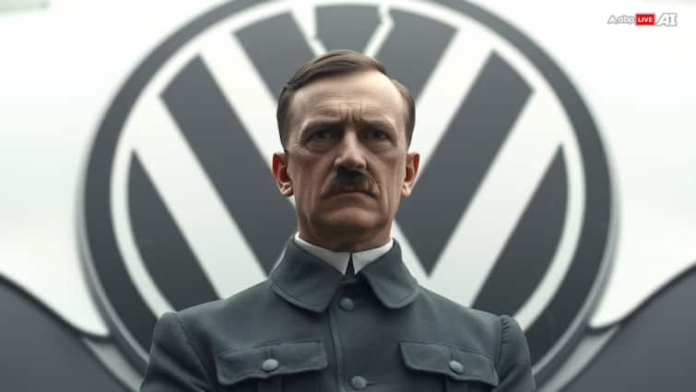Volkswagen plans to lay off thousands of its employees and shut down at least three of its major manufacturing plants. The grim development has turned the world’s eyes on not just the company’s future, but also its past. Volkswagen, with its famous ‘Das Auto’ tagline, is considered a global car manufacturer from Germany. A little-known fact about the firm is that German dictator Adolf Hitler played a crucial role in its establishment and even laid the foundation of its first plant in Wolfsburg, which is also the company’s largest.
Birth of Volkswagen: A Vision for the People
In the early 1930s, Adolf Hitler, an ardent patron of technological advances, envisioned a “people’s car” that would be affordable and accessible to the average German citizen. His goal was to motorise Germany and promote a sense of unity among its people. In 1933, shortly after becoming Chancellor, Hitler announced plans for this vehicle at an auto show, emphasising its role in enhancing mobility for the masses. He sought out Ferdinand Porsche, a renowned automotive engineer, to design this car. This collaboration marked the beginning of what would become one of the most iconic vehicles in history — the Volkswagen Beetle.
Ferdinand Porsche’s Volkswagen ‘Joy’ For Hitler
Ferdinand Porsche was instrumental in bringing Hitler’s vision to life. He designed the prototype of what was initially called the KdF-Wagen (Kraft durch Freude-Wagen or “Strength Through Joy Car”) in 1935, which was intended to be a reliable vehicle for families, capable of accommodating two adults and three children. Hitler personally approved the design, and on May 26, 1938, he laid the cornerstone for the Volkswagen factory in Wolfsburg, which was built specifically to manufacture this car.
Porsche’s engineering prowess combined with Hitler’s political backing created an environment that fast-tracked innovation. However, while Porsche focused on design and engineering, Hitler’s motivations were deeply rooted in his ideological goals and military ambitions.
Volkswagen During World War II
The KdF-Wagen was launched on February 17, 1939. But as World War II escalated, Volkswagen’s focus shifted from civilian cars to military vehicles. The company says, “Fitting-out of the main plant was continually postponed as priority was given to armaments. Not a single car had been produced by the time the war began on September 1, 1939. Instead, the retooling of the plant for armaments production meant that the company’s entire operations were re-aligned [for war use].”
In 1941, the company produced only 41 “people’s cars” as opposed to 4,609 military vehicles. Its strength was then 12,712 employees. The following year, It increased its production with 157 passenger cars and a whopping 8,549 military vehicles. Its “employment” also increased by about 4,000 workers.
In 1945, when World War II ended, Volkswagen had produced 4,329 vehicles, all for military use. The factory produced military utility vehicles such as the Kübelwagen and Schwimmwagen, which were essential for German forces during the war.
According to the Jewish Virtual Library, a project under the American-Israeli Cooperative Enterprise, this period also saw Volkswagen become complicit in the exploitation of forced labour. An estimated 60% of its workforce during this time comprised prisoners of war and concentration camp inmates. The factory employed forced labourers from various occupied territories, including Soviet prisoners and Jewish workers from concentration camps.
Post-War Transformation And Legacy
The Volkswagen success story, however, began only after the war. And the success came with its set of challenges. The factory had been heavily damaged, and production had to be halted. However, with support from British authorities and a rebranding effort that distanced itself from its Nazi past, Volkswagen began producing the Beetle again in 1945. The Beetle quickly became a symbol of Germany’s post-war recovery and economic miracle.
The company has since acknowledged its historical ties to Nazi Germany and has made efforts towards transparency regarding its past. “The US troops who arrived on April 11, 1945, stopped the plant’s armaments production and liberated its slave workforce. The longed-for end of the Nazi dictatorship marked the beginning of a new era for Volkswagen too,” the company website reads.
The company eventually rose to be Europe’s biggest carmaker and the largest employer in Germany. The closures come amid issues with workers’ unions and its efforts to cut costs.

